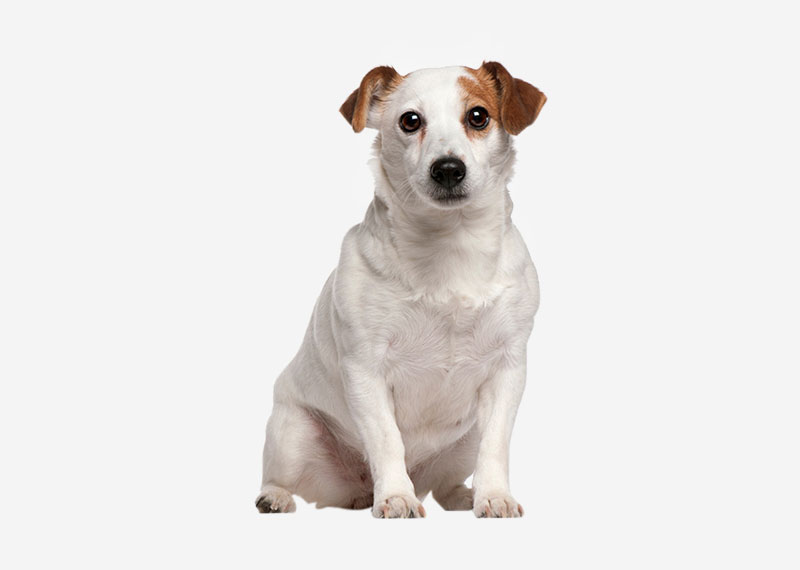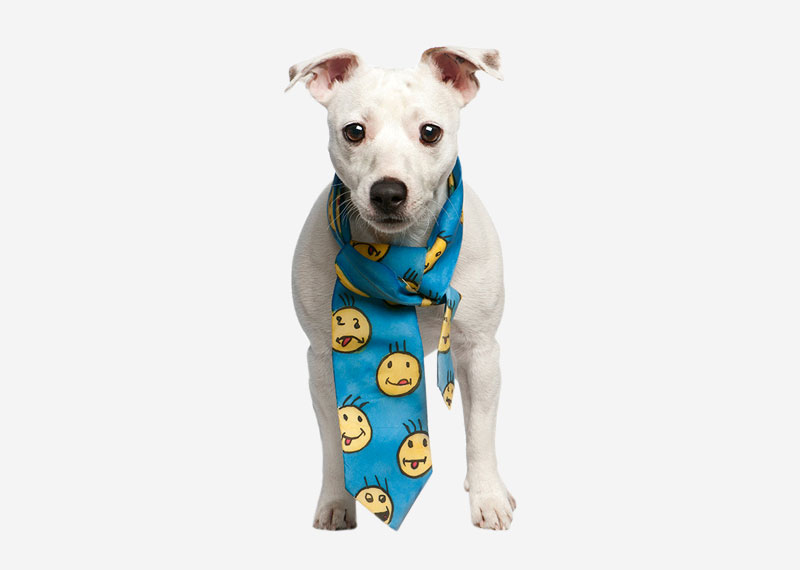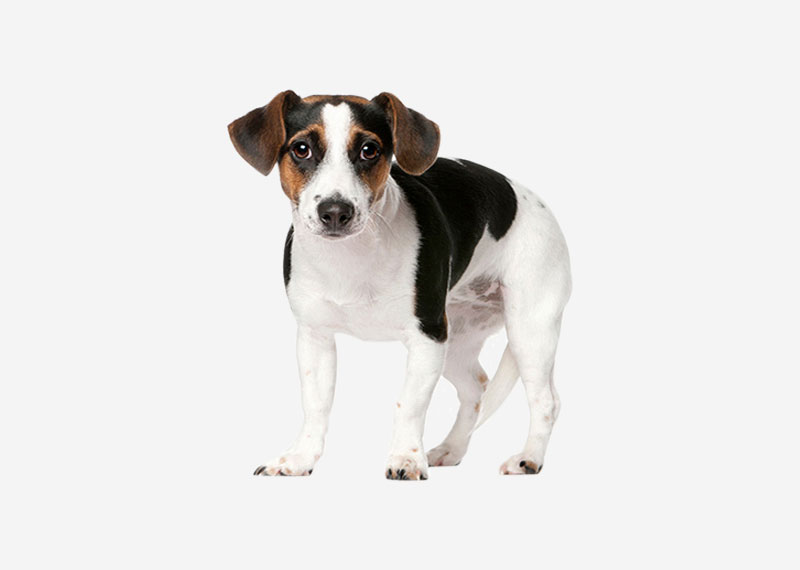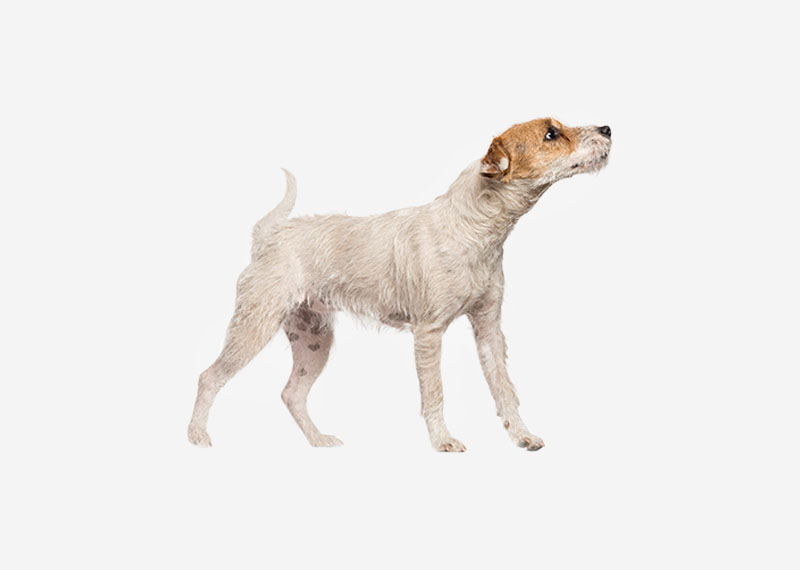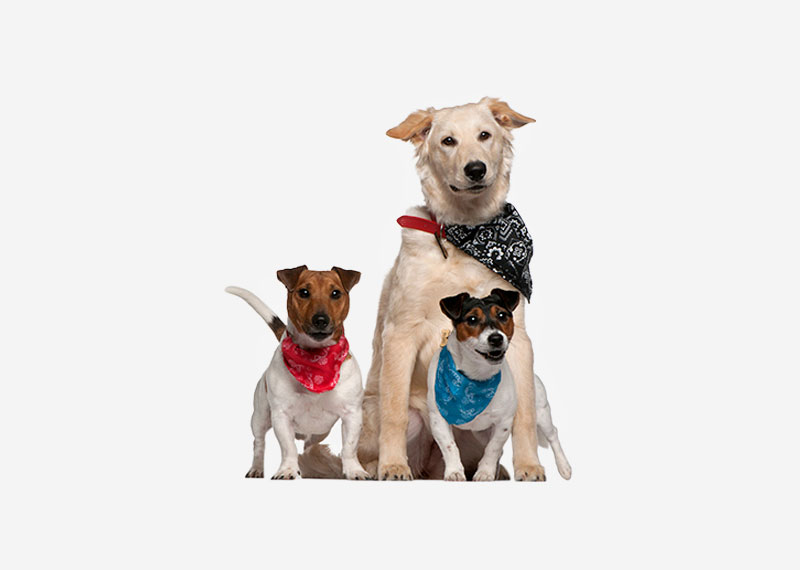Super User
Istrian Coarse-haired Hound
The Istrian Coarse-haired Hound is a dog breed from Croatia, developed in the mid-19th century for hunting fox and rabbit. It is a rough-coated scent hound still kept primarily as a hunting dog rather than as a pet.
History
Croats and Slovenes breeders created the Istrian Coarse-haired Hound in the mid-19th century by crossing the French Griffon Vendeén with the Istrian Shorthaired Hound, a smooth-haired hound developed from both sight hounds and scent hounds. The breed first took part in a conformation show in Vienna in 1866.The dog is still used for hunting fox, rabbits, hare, and wild boar.
Istrian Shorthaired Hound
The Istrian Shorthaired Hound (FCI No. 151 original name is Istarski Kratkodlaki Gonič) is a dog breed from Istria in Croatia, descended from a very old dog type of scenthound. The Istrian Shorthaired Hound is the slightly smaller counterpart to the longer coated Istrian Coarse-haired Hound from the same region.
Italian Greyhound
The Italian Greyhound is a small breed of the sight hound Dog type, sometimes called an "I.G.". The true breed origins are unknown.
History
The grace of the breed has prompted several artists to include the dogs in paintings, among others Diego Velázquez, Pisanello and Giotto di Bondone.The name of the breed is a reference to the breed's popularity in Renaissance Italy. Mummy dogs very similar to the Italian Greyhound (or small Greyhounds) have been found in Egypt, and pictorials of small Greyhounds have been found in Pompeii, and they were probably the only accepted companion-dog there. Dogs similar to Italian Greyhounds are recorded as having been seen around Emperor Nero's court in Rome in the first century AD.Although the small dogs are mainly companionship dogs they have in fact been used for hunting rats or mice, often in combination with hunting. It is believed that this was the reason they were bred in the first place by the Greeks.The Italian Greyhound is the smallest of the family of gazehounds (dogs that hunt by sight). The breed is an old one and is believed to have originated more than 2,000 years ago in the countries now known as Greece and Turkey. This belief is based on the depiction of miniature greyhounds in the early decorative arts of these countries and on the archaeological discovery of small greyhound skeletons. By the Middle Ages, the breed had become distributed throughout Southern Europe and was later a favorite of the Italians of the sixteenth century, among whom miniature dogs were in great demand. Sadly, though, 'designer' breeders tried, and failed, to make the breed even smaller by crossbreeding it with other breeds of dogs. This only led to mutations with deformed skulls, bulging eyes and dental problems. The original Italian Greyhound had almost disappeared when groups of breeders got together and managed to return the breed to normal. From this period onward the history of the breed can be fairly well traced as it spread through Europe, arriving in England in the seventeenth century.
Health
The Italian Greyhound has a median lifespan of 13.5 in a 2004 UK Kennel Club survey. A 1993 US breed club survey gives an average lifespan of 9 years but more than a quarter of the dogs had "accidents" recorded as cause of death.Health problems that can be found in the breed:
- Epilepsy
- Legg-Perthes disease (degeneration of the hip)
- Patellar Luxation (slipped stifles)
- von Willebrand disease (vWD) (Bleeding disorder)
- Progressive retinal atrophy (PRA)
- Color dilution alopecia (hair loss in dilute pigmented dogs, i.e.: blues, blue fawns, etc.)
- Leg Breaks (most common under the age of 2)
- Cataracts
- Vitreous degeneration
- Liver shunts
- Autoimmune hemolytic anemia
- Periodontal disease, gum recession, early tooth loss, bad tooth enamel
- Hypothyroidism, Autoimmune Thyroid Disease (Hashimoto's disease)
Responsible breeders will routinely check their dogs for the onset of various inherited disorders, these commonly include (but are not limited to): examinations on eyes, patellar examinations, thyroid function panels, von Willebrand's factor, hip and Legg-Perthes disease x-rays, and others. In research by the Ortheopedic Foundation for Animals, the Italian Greyhound was found to be the least affected by Hip dysplasia (canine) out of 157 breeds. Tests were conducted on 169 individual Italian Greyhounds, of which none were found to have hip dysplasia and 59.2% scored excellent on their hip evaluations.
Jack Russell Terrier
The Jack Russell Terrier is a small terrier that has its origins in fox hunting; it is principally white-bodied and smooth, rough or broken-coated. It is commonly confused with the Parson Russell Terrier (see the American Kennel Club) and the Russell Terrier, which is a shorter-legged, stockier variety. (Within the Fédération Cynologique Internationale, the "Russell terrier" is also known as "Jack Russell terrier".) The term "Jack Russell" is commonly misapplied to other small white terriers.The Jack Russell is a broad type, with a size range of 25.4cm - 38.1cm. The Parson Russell is limited only to a middle range with a standard size of 30.5cm - 35.6cm, while the Russell terrier is smaller at 20.3cm - 30.5cm. Each breed has different physical proportions according to the standards of their breed clubs.The Jack Russell is an energetic breed that relies on a high level of exercise and stimulation and is relatively free from serious health complaints. Originating from dogs bred and used by in the early 19th century, it has similar origins to the modern Fox terrier. It has gone through several changes over the years corresponding to different use and breed standards set by kennel clubs. Recognition by kennel clubs for the Jack Russell breed has been opposed by the breed's parent societies – which resulted in the breeding and recognition of the Parson Russell terrier. Jack Russells have appeared many times in film, television and print with several historical dogs of note.
Jagdterrier
The Jagdterrier is a type of working terrier originating in Germany, that is used for hunting quarry both above and underground. This breed of terrier is also called the German Hunt Terrier.
History
Between the two World Wars, game managers in Germany were focused on getting rid of "foreign" or introduced species, and bringing back now-extinct species that figured prominently in the mythology of the nation.One of the pioneers of this peculiar quest was Lutz Heck, the curator of the Berlin Zoo, who went on to "back breed" primitive cattle and horses to "recreate" the extinct aurochs (the kind of wild cattle seen in the cave paintings at Lascaux, France) and the tarpan (a kind of primitive forest pony). Heck was also instrumental in the recreation of an extinct species (or subspecies) of zebra called the "quagga".Heck's interest in dogs was driven in part by his passion for hunting, and in part by an over-heated nationalism that was mixed with a desire to see what could be done with selective breeding. A social climber and decided sycophant, Lutz Heck and his brother Heinz Heck were men who courted power and counted among their friends both Adolf Hitler and Hermann Göring.Even as nationalism and an interest in genetic engineering were rising in Germany, terriers were also rising to the height of fashion in much of Europe and the United States. The Allied Terrier Show was taken over by Charles Crufts in 1886, and was the largest dog show in the world after World War I, while the first breed-specific dog publication anywhere was a magazine devoted to fox terriers. The Westminster Dog Show was begun in 1907, and the first winner was a fox terrier. A fox terrier won again in 1908, 1909, 1910, 1911, 1915, 1916, and 1917.A fascination with terriers, fervent nationalism, and a propensity towards genetic engineering were braided together when Lutz Heck presented four black and tan Fell terriers—similar to what we now would call a Patterdale Terrier—to Carl Eric Gruenewald and Walter Zangenbert. Gruenewald was a "cynologist" (a self-styled dog man with an interest in genetics) and Zangenbert was a dedicated hunter with an interest in fox terriers.It did not take much prodding on Heck's part to convince Gruenewald and Zangenbert that what the world needed was a true German Hunt Terrier to compete (and of course trump) the British and American fox terriers in the field.Gruenewald and Zangenbert added to their team Chief Forester R. Fiess and Dr. Herbert Lackner, men with land for a kennel, and the financial means to support it over a decade-long quest.An early problem was that the Black and Tan Terriers selected as the core breeding stock and deemed "ideal hunters" based on color alone were, in fact, not all that great at hunting. As Gruenewald later wrote::"We were glad to own fox terriers with the hunting color, and we hoped to use these four puppies successfully in breeding to establish a hunting fox terrier breed (jagdfoxterrier-stamm). From the viewpoint of hunting these four dogs were not bad, although they left much to desire. First we tried inbreeding, pairing brothers with sisters. But the results were not good. No wonder -- after all, the parents weren't real hunting dogs. The picture changed, though, when we bred our four 'originals' with our well-trained old hunting fox terriers. The beautiful dark color continued to be dominate. Dogs with a lot of the white color and spotted dogs were selected and eliminated from further breeding."The breeding program for the Jagdterrier was massive in scale and unwavering in its selection criteria. At one point the men had 700 dogs in their kennels, and not a single dog was allowed to be placed outside of the kennel. Dogs that did not look the part or which were deemed to be not of the quality desired, were shot. Early dogs were both smooth and rough coat, but the breeding program moved to get rid of smooth coats and the coat of the final product can best be described as "slape coated"—a short, hard and wiry coat that sheds water and dirt while providing warmth in winter.After only 10 years time the dogs were breeding more-or-less true, with a Patterdale Terrier-like appearance, albeit with more red on the undercarriage.The German Hunting Terrier Club (Deutscher Jagdterrier-Club) was founded in 1926, and the dog was warmly embraced in part because it fit well with the rising nationalistic sentiment within Germany at the time. It did not hurt at all that Lutz Heck was a darling of the Nazi regime and counted Hermann Göring among his closest friends.In 1938, a German by the name of Max Thiel, Sr. bought his first Jagdterrier. Thiel hunted with this dog for only a few years before the start of World War II. During the war Thiel lost his dogs, but after the war he settled in Bavaria and purchased two female dogs, Asta and Naja.In 1951 Thiel came to the U.S, bringing with him Naja. He soon sent for Asta, who was bred and shipped pregnant. In 1954, Armin Schwarz Sr., imported a "champion" sire named Axel, and a few more litters were promulgated. In March 1956, nine Jadgterrier owners met in St. Louis, Missouri, and formed the Jagdterrier Club of America, with the expressed goal of getting the dog recognized by the American Kennel Club. In fact, the club did not prosper and eventually died out.The Jadgterrier did not become popular in the U.S. for several reasons, not the least of which was that in the U.S. very few people hunt fox to ground. In addition, American hunters had excellent hunting dogs of their own. U.S. pit bull crosses may be the finest pig dogs in the world, while American-bred bird dogs are far superior to any terrier. Experienced raccoon and squirrel hunters were not about to give up their Treeing Walker Coonhounds or Mountain Feist to embrace a new breed of dog that most people could not even pronounce.In recent years, with the rise of interest in terrier work in the U.S., new lines of Jagdterriers have been imported to the U.S., but most are used for above-ground or barn work due to their size. For a Jadgterrier to do well working underground in the U.S., it has to be at the absolutely smallest end of the breed standard or even undersized.Many of the newer/later imports to the USA are within the true FCI breed standard(correct size)and are being used successfully both above and below ground with many reports of their offspring making exceptional hunting, flush and retrieval dogs both on land and in water. Today there are many hunters across the USA adopting this courageous, intelligent breed as a hunt companion because of its versatility in various hunt disciplines and aim to please attitude.
Jämthund
The Jämthund, also called the Swedish Elkhound/Moosehound, is a breed of dog of the Spitz type that are found in Northern Europe. The Jämthund is eponymous to Jämtland, a province in the middle of Sweden. The dog is described as having a wolf-like appearance.
Exercise
As with most breeds developed for hunting, the Swedish Elkhound requires a lot of regular exercise to stay fit, both physically and mentally. It quickly becomes bored if kept indoors for too long and can become destructive.
Grooming
Regular brushing is necessary to keep the dense undercoat from matting. Bathing should not be done too often because it tends to dry out the weather-resistant coat.
History
The Jämthund received official recognition as a breed in 1946, due to intensive work by Aksel Lindström and others. Before that, the Jämthund and the Norwegian Elkhound were seen as the same breed.
Despite this short history of official breed recognition, it is often claimed that Jämthunds have been raised by the locals in Jämtland since the end of the last ice age. They are used for moose hunting and sled pulling. In the local dialect, it used to be referred to as bear dog. It is one of very few dogs that will not back off from a bear.
Japanese Bobtail
The Japanese Bobtail is a breed of domestic cat with an unusual "bobbed" tail more closely resembling the tail of a rabbit than that of other cats. The variety is native to Japan and Southeast Asia, though it is now found throughout the world. The breed has been known in Japan for centuries, and it frequently appears in traditional folklore and art.
History
One theory of short-tailed cats in Japan indicates that they arrived from the Eurasian continent at least 1,000 years ago. In 1602, Japanese authorities decreed that all cats should be set free to help deal with rodents threatening the silk worms. At that time, buying or selling cats was illegal, and from then on, bobtailed cats lived on farms and in the streets. Japanese Bobtails thus became the "street cats" of Japan.Around 1701, in Kaempfer's Japan, the first book written by a Westerner about the flora, fauna, and landscape of Japan, German doctor Engelbert Kaempfer wrote: "there is only one breed of cat that is kept. It has large patches of yellow, black and white fur; its short tail looks like it has been bent and broken. It has no mind to hunt for rats and mice but just wants to be carried and stroked by women."In 1968, Elizabeth Freret is the first known person to have imported the Japanese Bobtail to the Western Hemisphere from Japan. The short hair Japanese Bobtail was accepted for Championship status in the Cat Fanciers' Association in 1976. Recognition for the long hair variety followed in 1993. As of 2013, there are a number of Japanese Bobtail breeders, most of which are based in North America with a few in Europe and at least one in Japan; yet the breed remains rare.
Japanese Chin
The Japanese Chin (Japanese: 狆, chin), also known as the Japanese Spaniel, is the dog of Japanese royalty. A lap dog and companion dog, this toy dog dog breed has a distinctive heritage.
History
The true origin of the Chin is widely debated. It is widely agreed that the source breed for the Japanese Chin originated in China. These dogs were brought to Japan around 732. Some maintain the ancestors of these dogs first appeared in Japan around the year 732, as gifts from the List of monarchs of Korea, while others maintain that they were given as gifts to the Empress of Japan as early as the mid-6th century to 7th century, and even some saying they came to Japan as recently as around the year 1000.The Japanese created a breed so distinct from other dogs, that in Japan it was considered something different, distinct from a "dog" which was considered a working/helper animal whereas the Japanese Chin was considered strictly for pleasurable companionship. Its distinct appearance and personality eventually captured the hearts of Japanese Royalty and resulted in ownership being restricted to those of royal and noble blood.Each Japanese clans bred to their own standards. Because of this, there are many variations of the Chin in any area from size to coat density, eye set, personality, whether they are compact and well-muscled or slender-boned and fragile in appearance, etc. Once introduced to the West, a strong desire for the smaller 10 lbs or less version of the Japanese Chin came to dominate and become the standard of various kennel clubs around the world. Professor Ludwig von Schulmuth studied canine origins by studying the skeletal remains of dogs found in human settlements as long as the 8th millennium BC. The Professor created a genealogical tree of Tibetan dogs that shows the "Gobi Desert Kitchen Midden Dog", a scavenger, evolved into the "Small Soft-Coated Drop-Eared Hunting Dog". From this dog evolved the Tibetan Spaniel, Pekingese, and Japanese Chin`. Another branch coming down from the "Kitchen Midden Dog" gave rise to the Papillon and Long-haired Chihuahua and yet another "Kitchen Midden Dog" branch to the Pug and Shih Tzu.Though there is some documentation that indicates Portugal sailors introduced the breed to Europe in the 17th century by presenting some to Catherine of Braganza, Queen Consort to List of English monarchs Charles II of England, there is more credible evidence that the first Chin were gifted by the Emperor of Japan to an American naval officer, Matthew Calbraith Perry, when Perry visited the Orient in 1853 to open trade with the East. Perry was gifted with a total of seven (7) Chin; however, only two survived the passage back. Again, there is controversy over whether Perry gave the two to Franklin Pierce, List of Presidents of the United States, gave them to James Stirling (Australian governor), Rear admiral of the Royal Navy to take to Victoria of the United Kingdom or gave them to his daughter, Caroline Slidell, after returning from Japan. Caroline was the wife of August Belmont.
Health
This breed's flattened face contributes to a few Chin suffering from breathing and heart problems, as is common with Cephalic_index#Brachycephalic_animals. Because they are a brachycephalic breed, temperature extremes (particularly heat) should be avoided. Luxating patellas (knees) and heart murmurs are other genetically predisposed conditions. The oversized eyes are easily scratched and corneal scratches or more serious corneal ulcers in animals can result. Mild scratches benefit from topical canine antibacterial ointment specifically for eye application; more serious injury or ulcerations require urgent medical care. The Chin, as with most small breed dogs, can also have a risk of hypoglycemia when under the age of 6 months; this concern can continue in Chin that mature at 4 to 5 pounds or less. Some Chin do have seasonal allergies.A UK Kennel Club survey puts their median lifespan at 9.25 years though some have been known to live into their 20s.
Japanese Spitz
The is a small to medium breed of dog of the Spitz dog type. The Japanese Spitz is a companion dog and pet. There are varying standards around the world as to the ideal size of the breed, but they are always larger than their smaller cousins, the Pomeranian. They were developed in Japan in the 1920s and 30s by breeding a number of other Spitz type dog breeds together. They are recognized by the vast majority of the major kennel clubs, except the American Kennel Club due to it being similar appearance to the Pomeranian, American Eskimo Dog and Samoyed. While they are a relatively new breed, they are becoming widely popular due to their favorable temperament and other features.The major health concern is patellar luxation, and a minor recurring concern is that the breed can be prone to runny eyes. They can act as reliable watchdogs, but are a type of companion dog and prefer to be an active part of the family. Although they might appear fluffy, they are a low maintenance breed as the coat has a non stick texture often compared to teflon.
History
Dog breeders in Japan in the 1920s and 1930s created the Japanese Spitz by crossbreeding a number of other Spitz breeds to develop the Japanese Spitz. Breeders began with white German Spitz dogs originally brought over from northeastern China to Japan; they were first exhibited at a dog show in Tokyo in 1921. Between 1925 and 1936 various small white Spitz breeds were imported from around the world and crossed into the developing breed, with the goal of producing an improved breed.
Mortality
Life expectancy is estimated at 10–16 years.
Temperament
Active, loyal, and bright, The Japanese Spitz is first and foremost a companion dog and thrives on human contact and attention, preferring to be a member of the family. They are known as very loyal dogs. Despite their relatively small size, they can serve as watchdogs. They enjoy being active and love to be in the outdoors. They are intelligent, playful, alert, and obedient, and particularly excellent and loving toward children. Unlike many other dogs, the Japanese Spitz will customarily have his or her's tail, flipped onto its back. In some cases this is thought dominant behaviour, but in the Japanese Spitz case this is normal bearing.
Japanese Terrier
The is a small terrier native to Japan. It is believed to be descended from the progeny of fox terrier types, pointer and Endemic (ecology) Japanese dogs. This dog is also known as the Names of Japan Terrier. The breed is rare, even in Japan.



